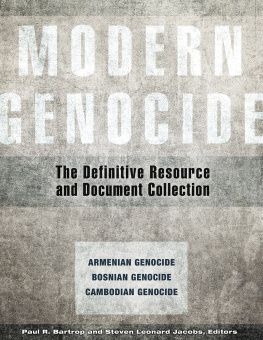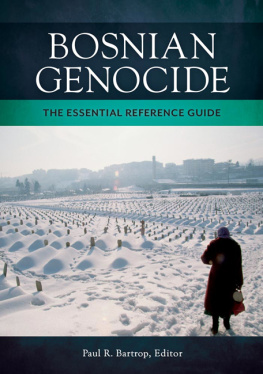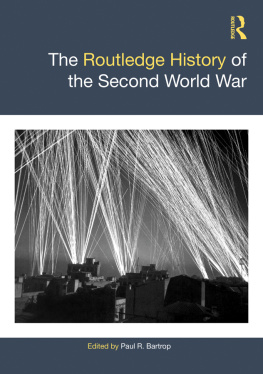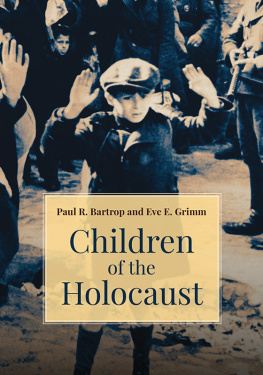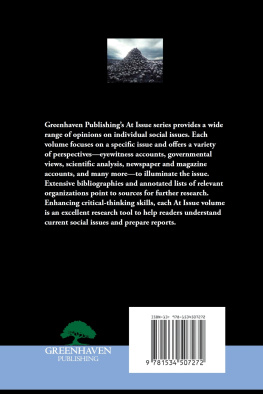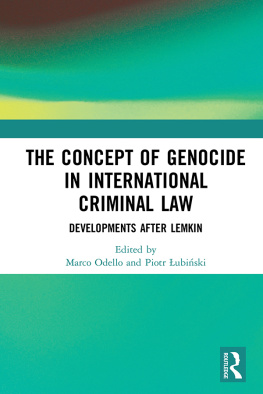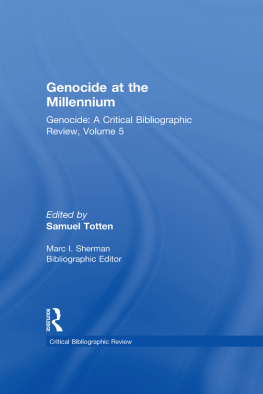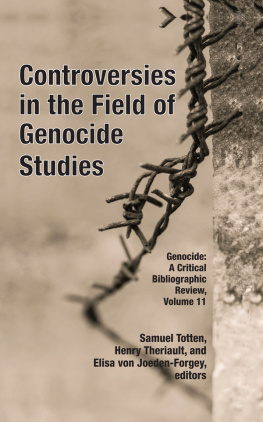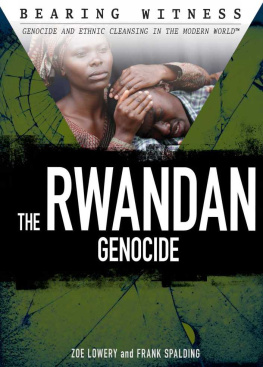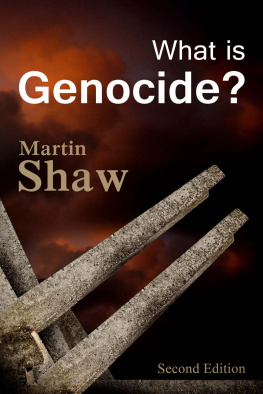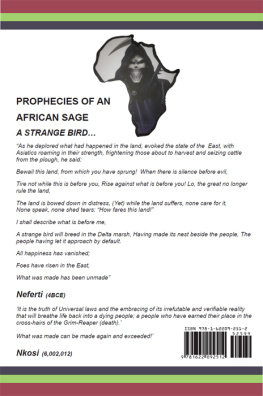MODERN GENOCIDE
MODERN GENOCIDE
The Definitive Resource and Document Collection
VOLUME 1: ARMENIAN GENOCIDE, BOSNIAN GENOCIDE, AND CAMBODIAN GENOCIDE
Paul R. Bartrop and Steven Leonard Jacobs
Editors
Copyright 2015 by ABC-CLIO, LLC
All rights reserved. No part of this publication may be reproduced, stored in a retrieval system, or transmitted, in any form or by any means, electronic, mechanical, photocopying, recording, or otherwise, except for the inclusion of brief quotations in a review, without prior permission in writing from the publisher.
Library of Congress Cataloging-in-Publication Data
Modern genocide: the definitive resource and document collection / Paul R. Bartrop and Steven Leonard Jacobs, editors.
volumes cm
Includes bibliographical references and index.
ISBN 978-1-61069-363-9 (hard copy: alk. paper) ISBN 978-1-61069-364-6 (ebook)
1. GenocideHistory. I. Bartrop, Paul R. (Paul Robert), 1955 II. Jacobs, Steven L., 1947
HV6322.7.M63 2015
364.15'1dc23 2014019716
ISBN: 978-1-61069-363-9
EISBN: 978-1-61069-364-6
19 18 17 16 15 1 2 3 4 5
This book is also available on the World Wide Web as an eBook.
Visit www.abc-clio.com for details.
ABC-CLIO, LLC
130 Cremona Drive, P.O. Box 1911
Santa Barbara, California 93116-1911
This book is printed on acid-free paper 
Manufactured in the United States of America
Every reasonable effort has been made to trace the owners of copyrighted materials in this book, but in some instances this has proven impossible. The editors and publisher will be glad to receive information leading to more complete acknowledgments in subsequent printings of the book and in the meantime extend their apologies for any omissions.
To Our Grandchildren
In the hope, and with the prayer, that their world will become one that is freed from the scourge of genocide
PAUL R. BARTROP
Jacob, Madeline, Mila, Asher, Max
STEVEN LEONARD JACOBS
Laun, Jacob, Greer, Drew, Liam
Contents
| Volume 1 |
| Volume 2 |
| Volume 3 |
| Volume 4 |
Genocide is a global problem of the first magnitude. It has been for hundreds, if not thousands, of years, but in the 20th century it assumed hitherto unparalleled dimensions. Numerically, more people were murdered at the hands of others, as part of deliberate policies, than at any other time in recorded history.
While the 20th century was the century of total wartwo global conflicts that began in Europe in 1914 and 1939 testify to thatit was also, concurrently, the century of genocide. The destruction of entire human groups, as policy , saw mass annihilation on a scale much greater than that of military deaths in wartime. And not only that: frequently, war (whether international or civil conflict is immaterial) served as a mask for genocide, even though the nature of genocidal destruction is such that war need not be present in order for genocide to take place.
While whole libraries of studies have been written attempting to analyze the actions of governments, responses of bystanders, and failures to rescue the victims, collections laying out both the key reference entries and the major primary source documents of genocide are relatively rare. The purpose behind a collection of this kind is itself singular: to provide, in an easy-to-read format, the most important reference entries and documents about the century of genocide. It is intended that this will be of particular benefit to teachers and students, as well as to those not engaged in the formal study of genocide but who are interested in learning more. Much thought was put into the selection of primary source material; not only have we provided important official statements, acts, memoranda, reports, and the like, we have also included a number of personal accounts from those who were in some way involved in the genocides under examination. These range from those who were victims to those who were witnessesand, in some cases, even to those who actually perpetrated the genocide. It is hoped, by doing so, that we have managed to retain something of the very necessary human dimension of what genocide really is: a thoroughly antihuman activity that is, in its essence, all too human is its execution.
When considering what content to include in this encyclopedia, it was decided from an early date that we would adhere to the widely accepted UN definition of genocide, as embodied in the UN Convention. The definition, located at Article 2, is as follows:
In the present Convention, genocide means any of the following acts committed with intent to destroy, in whole or in part, a national, ethnical, racial or religious group, as such:
- (a) Killing members of the group;
- (b) Causing serious bodily or mental harm to members of the group;
- (c) Deliberately inflicting on the group conditions of life calculated to bring about its physical destruction in whole or in part;
- (d) Imposing measures intended to prevent births within the group;
- (e) Forcibly transferring children of the group to another group.
Based on this definition, the encyclopedia includes the following genocides, in alphabetical order: Armenia (19151923), Bosnia (19921995), Cambodia (19751979), Darfur (20032006), East Timor (19751999), Guatemala (19811983), Herero (Namibia) (19041907), the Holocaust (19411945), Kurdistan (1988), and Rwanda (1994).
Despite our use of the term, it must be pointed out that the UN definition of genocide is imperfect, and has been interpreted in various ways by politicians to rationalize their own agendas. There is tremendous debate over what constitutes genocide. At least one scholar has argued that there are only three historical case studies that can truly be termed genocide: Armenia, the Holocaust, and Rwanda. Critics might argue that there is no justification for including Bosnia, Cambodia, Darfur, East Timor, Guatemala, Kurdistan, or Namibia in this encyclopedia. For these latter cases, the applicability of the UN Convention can be debated or questioned, but we should certainly not discount them. We also should not dismiss other events that some consider genocide. For that reason, we have included in Appendix I over one hundred reference entries on other atrocities, massacres, and war crimes that do not neatly fit the UN definition of genocide.
Some scholars place the issue of intentionality at the forefront of their genocide definitions. In other words, they believe that an event only qualifies as genocide if there is proven intent to destroy a national, ethnic, racial, or religious group. Unfortunately, there is often no smoking gun that leads back to the government or groups responsible for genocidal violence, making it difficult to prove that a perpetrator possesses the requisite intention to destroy a victim group based on his or her nationality, race, ethnicity, and/or religion. However, in criminal law a repeated pattern of actions resulting in the same outcome is frequently adjudged to infer intent on the part of a perpetrator, regardless of an expressed statement of intent. It is therefore our judgment that the events covered in this encyclopedia all conform, in one way or another, to the UN definition of what constitutes genocide.
In assembling this work, two people have provided particular assistance that it is our pleasure to acknowledge. Padraic (Pat) Carlin, our editor at ABC-CLIO, has at all times been professional while keeping a benevolent eye on the time and personal demands that can sometimes draw professors attention away from deadlines and other publishing obligations. We are indeed grateful to Pat for all his support and his gentle (though necessary) prodding.

